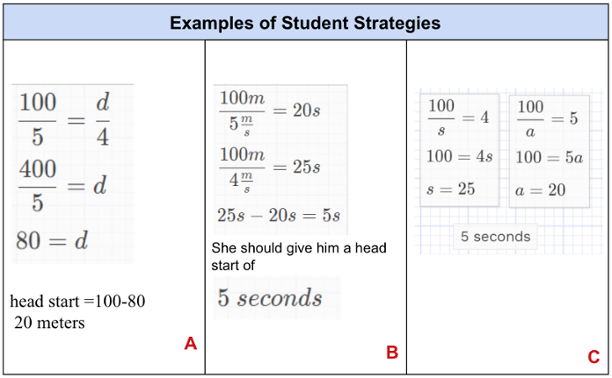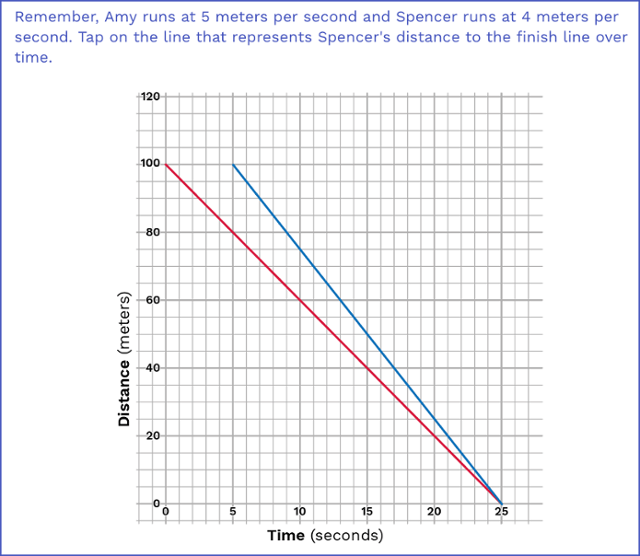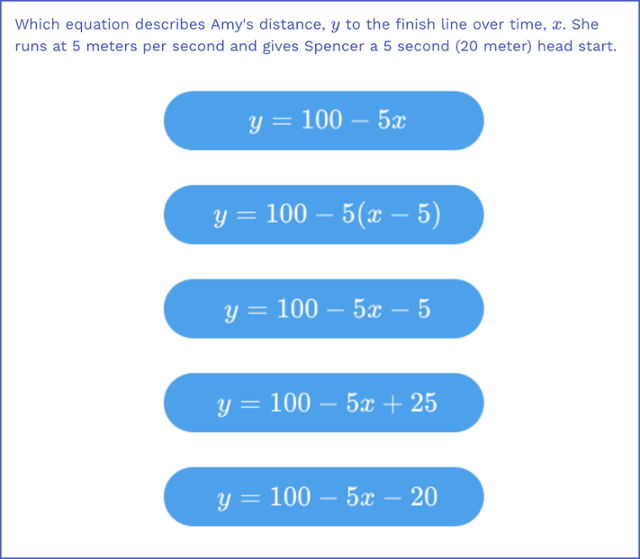
The first question accepts answers with or without units (we want to give more entry points for success, feedback on units can come separately). If you want to assess the units, feel free to modify the accepted answers or create a task that asks them what the units should be if the answer is 20. You can also review student work and praise someone for getting the right answer, then praise someone else for using the right units.
This task also has a custom legend of common responses so if a student gets the number correct but spells the unit word wrong, they will be coded as blue (misspelled seconds but still had a 5 in their answer) or yellow (misspelled meters but still had a 20 in their answer). This can let you decide how important spelling is and distinguish spelling fluency from mathematical fluency. Better data means better feedback.
The following table also presents some examples of student strategies for task 1. Student A has given the correct answer in meters, shown their work and used fractions to solve the problem. Student B has divided the distance by each rate to find the time for each to finish. Student C has done similarly but using s for Spencer’s time and a for Amy’s time.

We encourage you to use the display student work feature to review examples in a whole class setting. This lets students see that they are not alone and that others can make similar errors or take different but also valid approaches to the same problem.
The next task asks them to tap on the line that represents Spencer’s distance to the finish line over time. Answers close to the convergence point are not accepted because we want students to select an answer where we know which line they mean, not one answer that could be interpreted as multiple lines.

This task also has the opportunity for you to discuss what would happen if you extend Amy’s line (the blue one) back to the y-intercept. A great question for students who aced this: “If you want them to start at the same time how many meters from the finish line does Amy need to start?” Specify that this is not a head start, it actually means they run different distances so it is more of a handicap than a head start.
The final task has two correct answers, B and D. This is designed as an opportunity for you do have a discussion about why they are both correct. You can talk about how B represents a 5 second delay for Amy and how D represents a race where Amy has to run an extra 25 meters. Students might choose E because of the head start of 20 meters or C because of the 5 second head start.
